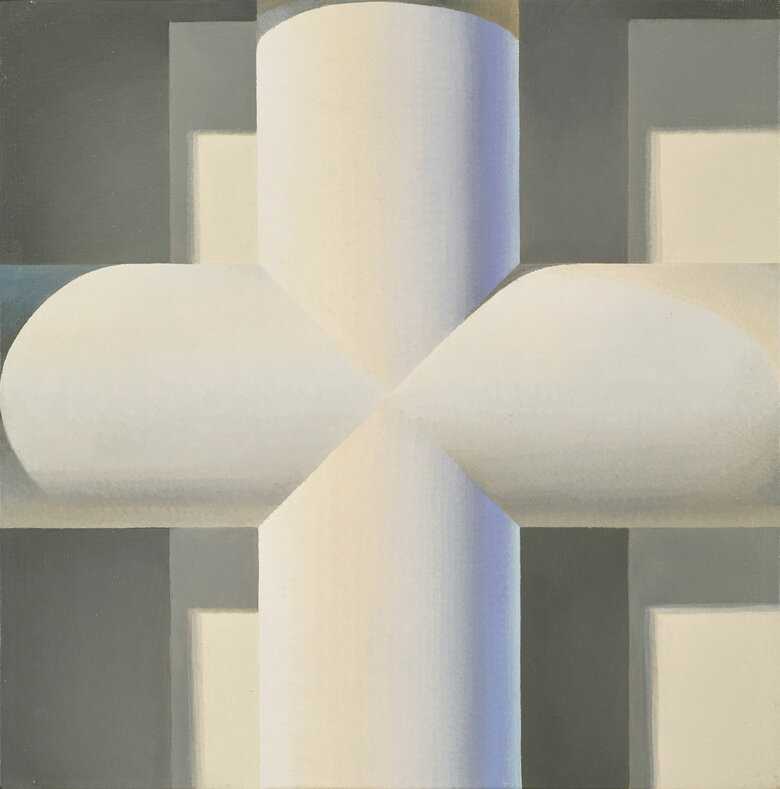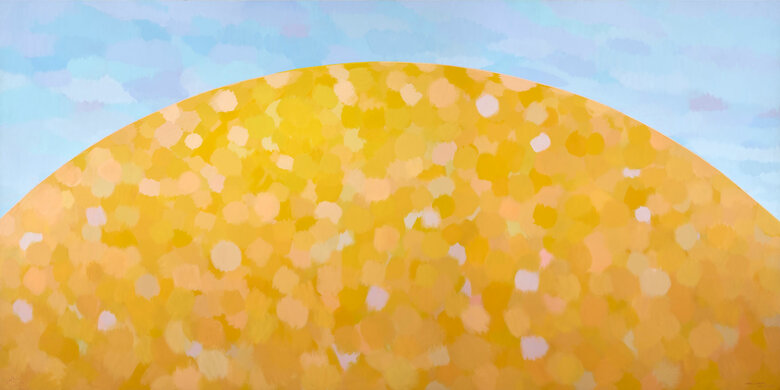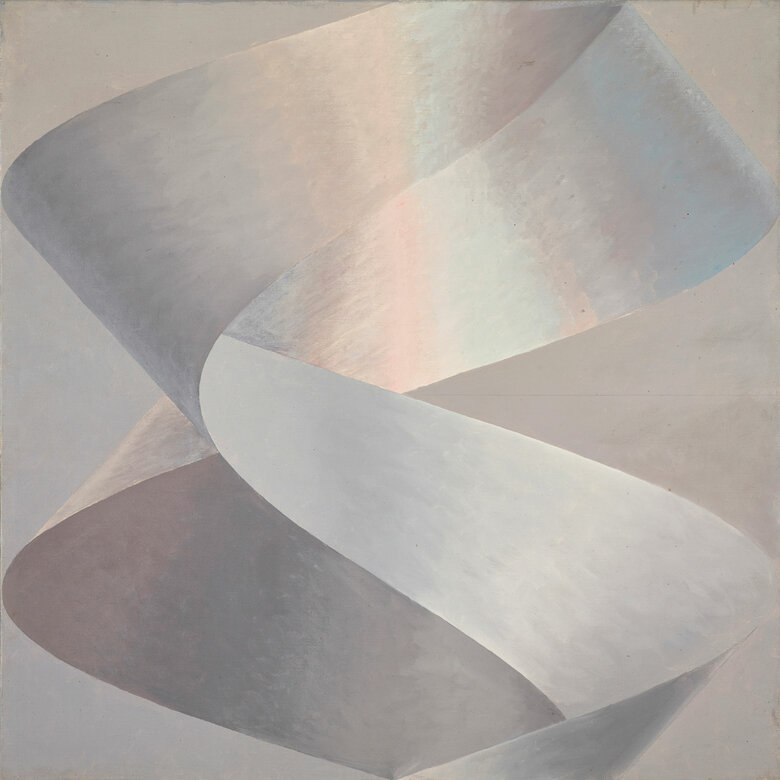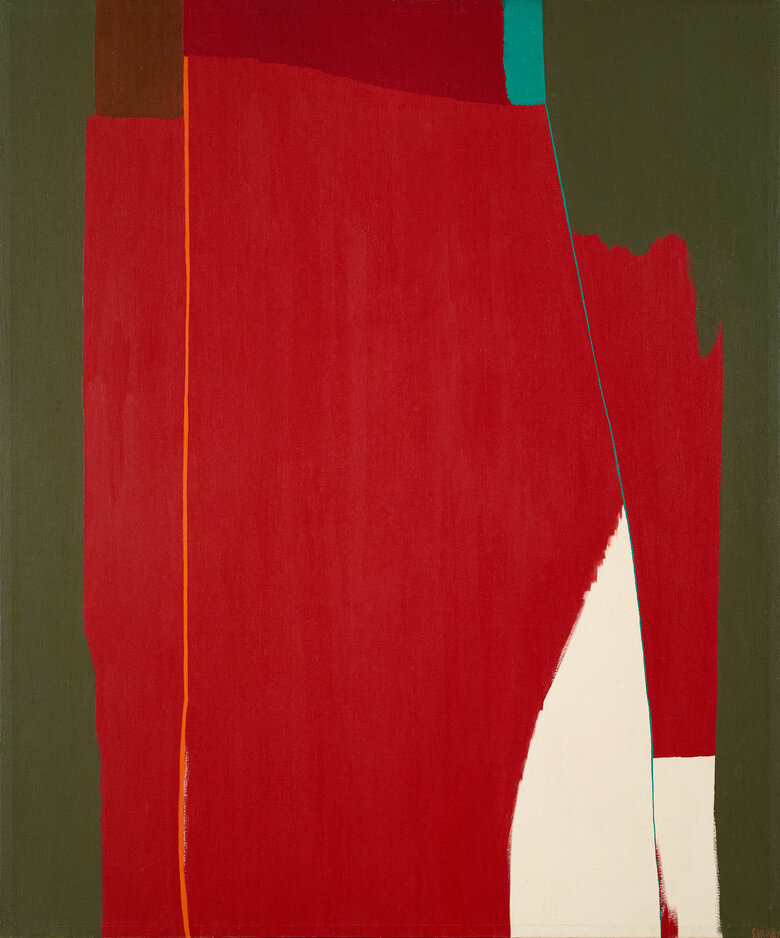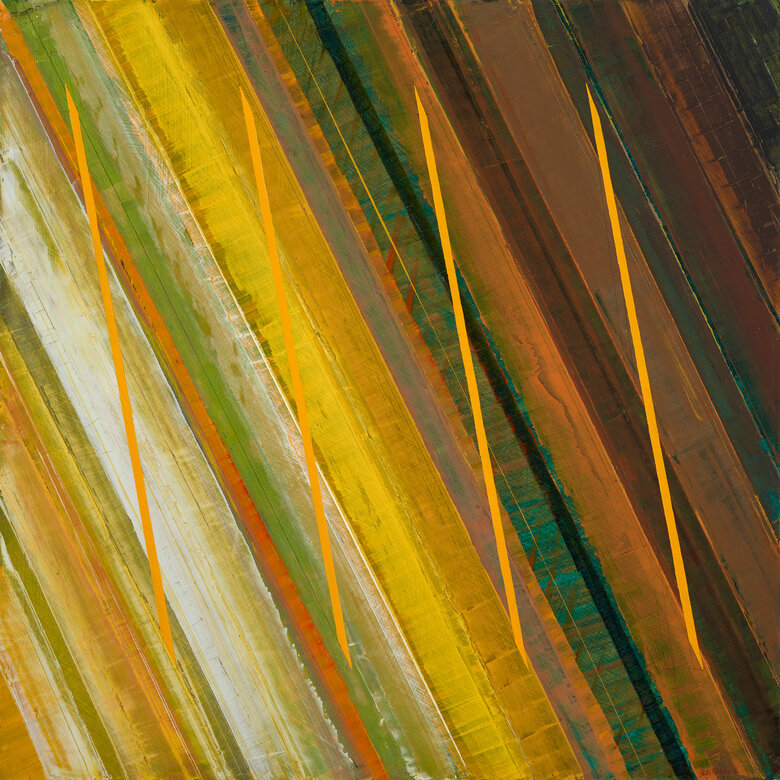In Homage to Ghassan Kanafani, Samia Halaby pays tribute to the late Palestinian writer and political activist Ghassan Kanafani. His portrait is surrounded by a mass of symbolic Palestinian faces among blooming poppy flowers.
Kanafani’s realistic face is represented in the center of the composition. It is rendered with photographic precision, reminiscent of digital art. Looking young and solemn, the writer stares straight ahead with a poignant gaze. Filling up the canvas around him is an army of fida’iyeen (Palestinian freedom fighters), looking equally solemn. Only their faces, smaller than Kanafani’s, are illustrated. Halaby has highlighted their eyes, as most wear the keffiyeh. Although the majority of the figures depicted are of men, the peripheral frames of the composition show otherwise. In the lower right corner, an elderly couple, looking sad and tired, stare away from the viewer. In the lower-left corner, two young girls and a boy look directly at the viewer with the same sorrowful expression. Interspersed among the numerous faces are a slew of large poppy flowers in full bloom.
A prominent element of this artwork is the very captivating shade of red. The keffiyeh, a red checkered scarf, covers the men's faces; the keffiyeh is a traditional Palestinian headdress and a glorified symbol of Palestinian resistance. Halaby's contrasting red tones outline the men's downcast eyes. The many disheartened faces are nestled among vivid poppy flowers that grow in size as one moves down the vertical axis of the painting. The comparable size and color of the flowers and faces, with no negative space in between, gives the impression the two are united, sprouting from the same place. The comparison is not surprising given the symbolic meaning of the red poppy flower in Arab culture. As the most prominent spring flower in Palestine, it is known to symbolize martyrs' spilled blood that has been resurrected.
Homage to Ghassan Kanafani is praise for Kanafani's key role in Palestinian resistance. A leading advocate of Palestinian liberation, Kanafani’s assassination at thirty-six is regarded as one of the most significant losses to the Palestinian cause. His prominence is underscored in the artwork through his recognizable features, the central position of his face and his larger size compared to the other figures. Furthermore, the inclusion of the elderly and children hints at Kanafani’s unwavering belief that resistance is a collective struggle, one that should include all members of the community. Kanafani was an intellectual, with his pen being his greatest weapon. The painting remains faithful to his support of non-violent resistance. The depicted fighters are unarmed; instead, they are compared to blooming flowers.
Painted forty-five years after Kanafani’s assassination, the artwork calls for remembrance. In depicting a decades-long subject matter in contemporary form, Homage to Ghassan Kanafani is a powerful reminder of the Palestinian cause, the people who fought, and an unmistakable rebellion against forgetfulness.

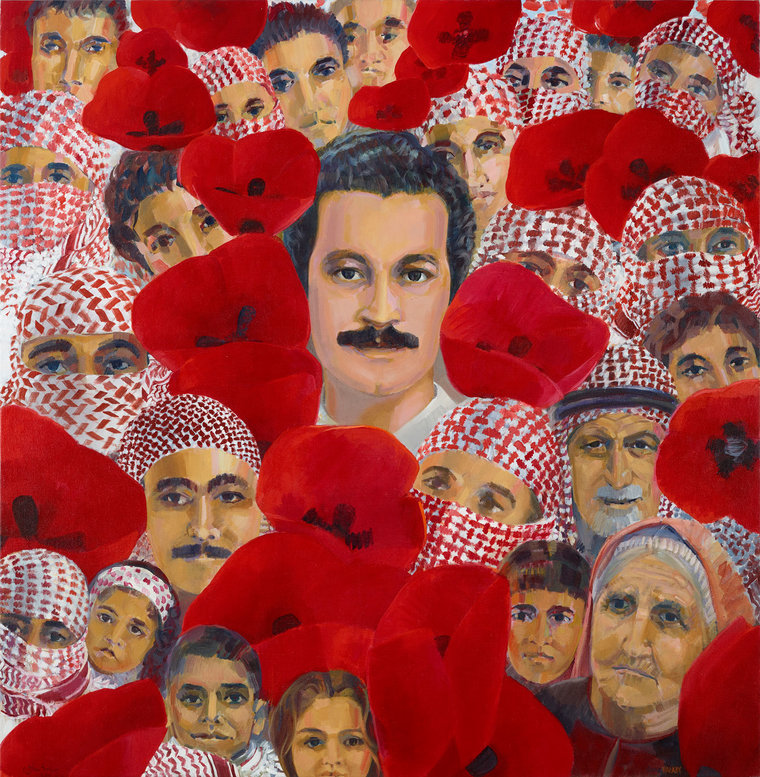

-SamiaHalaby-Front.jpg)
-SamiaHalaby-Front.jpg)
